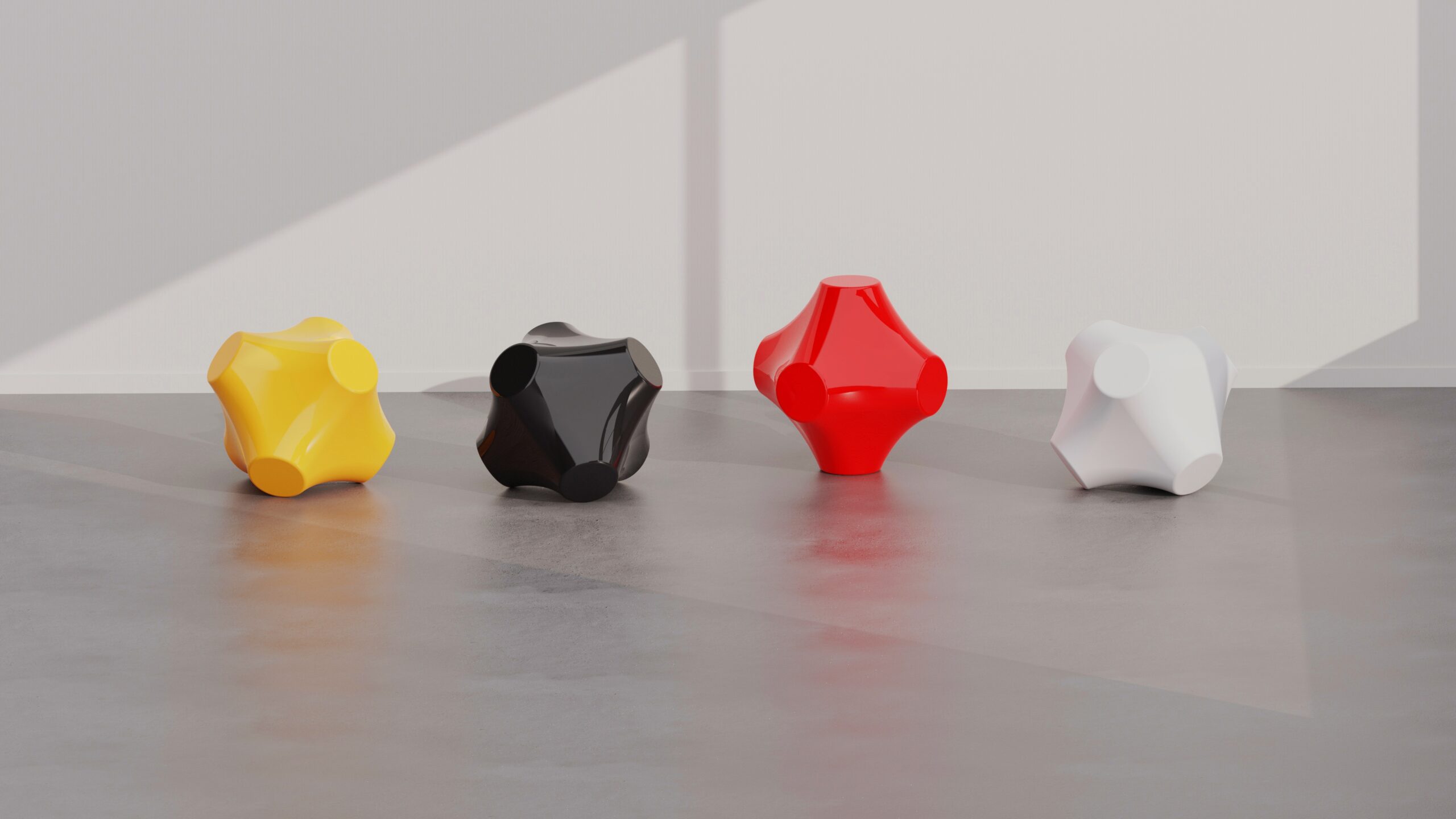Meet Lincoln Chen, the visionary Product/Furniture Designer hailing from Nanjing, Jiangsu. Shaped by a dynamic upbringing that took him to various places with his parents, Lincoln’s life has been a canvas of diverse experiences and boundless curiosity. A proud alumnus of the ArtCenter College of Design (ACCD), he not only completed his undergraduate degree in Product Design but also ventured into the realm of Environmental Design, specializing in furniture and lighting.
With six months of industry experience under his belt, Lincoln chose to elevate his expertise by pursuing a graduate degree at ACCD. His academic journey culminated in a showcase of his talents at the prestigious ICFF/Wanted Design furniture design exhibition in New York in May 2023. Now, on the brink of the next exciting chapter in his career, Lincoln Chen stands ready to leave an indelible mark on the world of design.
Lincoln is also an avid long-distance runner. Starting in 2019, he has completed a full marathon and maintains a daily running distance of 3 to 6 miles. “Running is my way of relieving stress and rebooting my brain. Whenever I run out of inspiration, I go for a run. During running, you don’t need to think about other clutter; you just need to focus on your steps, adjust your breathing, and empty your mind.”
Years of design experience have given Lincoln his understanding of design. He sees design as a process of simplifying complex things, whether it’s the form, function, or the feelings a product evokes. Human nature tends to be lazy, so to make your work more easily accepted, you have to think about how to reduce the audience’s learning curve and how to directly captivate viewers. Lincoln believes that a good design should be like a photograph, having a focal point, and other elements serve this focal point, drawing people’s attention. This focal point may not necessarily be visual; it can also be functional or even emotional.

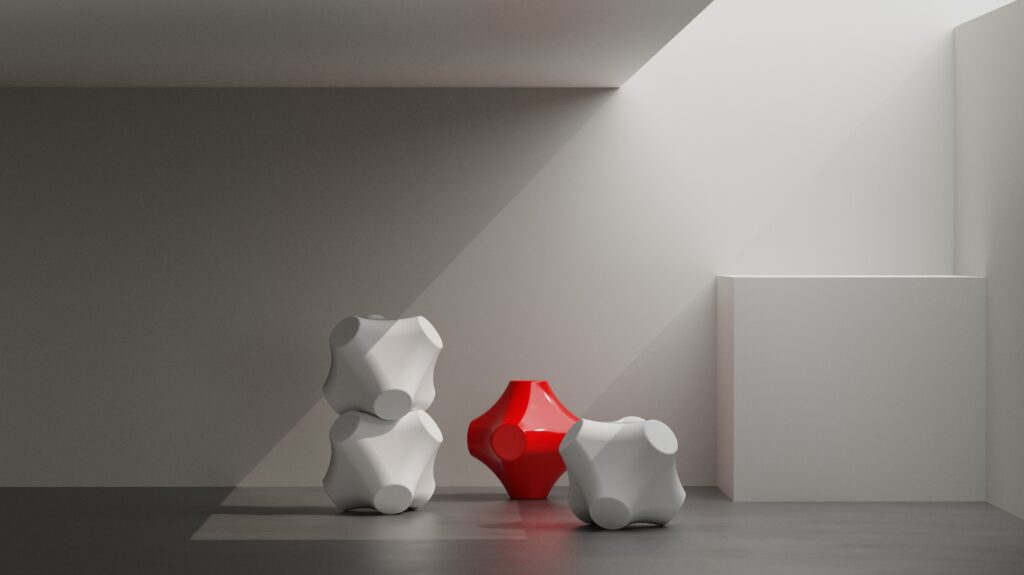
It’s a pleasure to interview you, Lincoln. Could you please give our readers a brief introduction about yourself?
Hello, everyone! I’m Lincoln, a product/furniture designer from Nanjing, Jiangsu. Growing up in various places with my parents has enriched my life experiences and fueled my curiosity about the world. I graduated with a degree in Product Design from the ArtCenter College of Design (ACCD). After working for six months post-graduation, I decided to further my education. Initially intending to stick to industrial design, I discovered the dedicated furniture design major within the school and transferred to the Furniture/Lighting Design program under the Environmental Design department at ACCD during the second semester. I completed my graduate degree at the end of April and, in May, participated in the ICFF/Wanted Design furniture design exhibition in New York with fellow schoolmates.
You studied both Product Design and Furniture & Lighting Design at ACCD. What led you to choose these majors, and what has been your experience in the industry compared to your expectations?
Initially, I chose industrial design for my graduate studies, but after a week, I realized it wasn’t teaching me anything new. It was only through a chance encounter with a senior specializing in furniture design that I discovered there was a dedicated furniture design program within our school. I was drawn to the idea of turning my sketches into tangible objects rather than just conceptual drawings. Hence, I submitted a transfer application in the third week and moved into the furniture design major in my second semester. This decision filled the gap in my previous experiences where I focused on drawing and modeling without hands-on production.
However, I also discovered that turning an idea into reality is not as easy as it seems. Even with precise design drawings and clear communication via emails, prototype samples often have various issues. Some are due to design flaws, others to substandard factory processes, and additional challenges such as rush jobs, transportation, and materials. Communicating with factories can be tiresome and challenging, but these experiences provided valuable insights into design and production, forcing me to consider materials, processes, production efficiency, transportation, costs, and effective communication with factories—questions I had never thought about before. Despite the difficulties, it’s essential to think about these factors while designing.
You often emphasize a balance between rationality and sensibility in your product designs. Could you share the reasons behind this and how you typically achieve this balance?
I believe design is a combination of tools and art. Tools represent rationality, while art represents sensibility. Good work should not only fulfill its utilitarian function as a tool but also captivate the audience emotionally. For us, designing a reliable tool or a beautiful piece of art individually is not difficult. The challenge lies in integrating the two. Typically, I start from a sensibility perspective, thinking about how a design can represent my ideas and captivate the audience emotionally. Then, I continuously refine the design to achieve a balance between rationality and sensibility. It’s a lengthy process of trade-offs. In this regard, I’m still a student—continuous observation and reflection are necessary for solidifying and perfecting my style.
Do you think your works have a specific style? If so, could you describe it in three words?
Rigorous, ingenious, surprising.
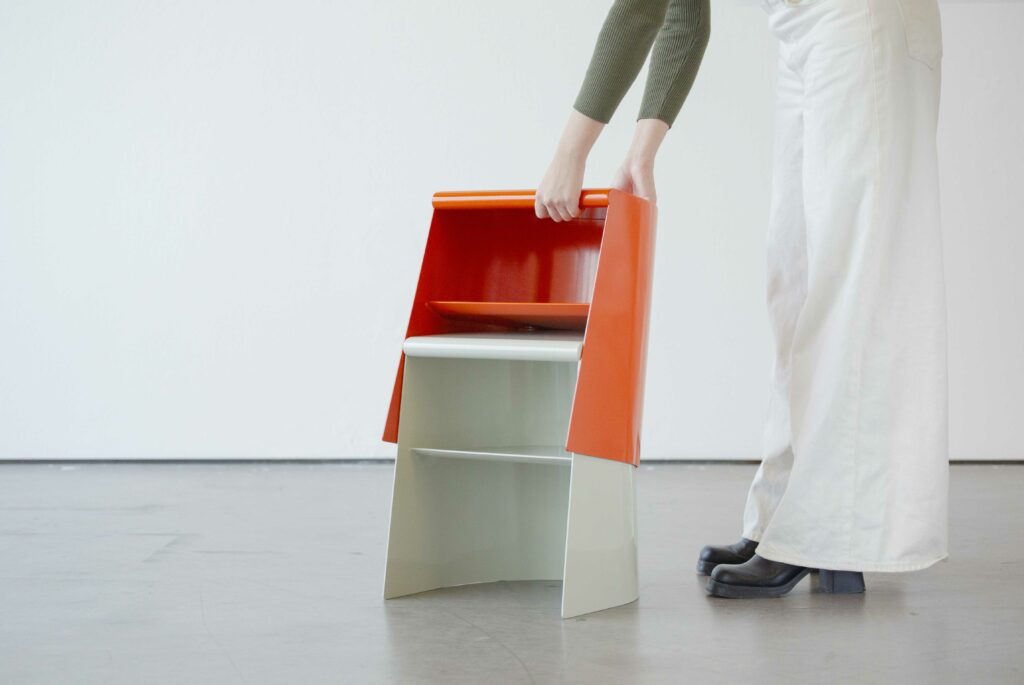
In your design of the Piclo Stackable Stool, you cleverly implemented a slight incline to enable stackability. Do such ingenious ideas frequently appear in your works, blending design aesthetics with functionality?
Honestly, such ingenious ideas don’t always come easily. Sometimes, it’s a matter of chance or luck. More often than not, there are periods of creative drought where ideas are elusive. Even when I was designing Piclo, I went through a prolonged low period. I wasn’t satisfied with the drawings for several weeks, and many ideas were discarded in my mind before taking shape. One day, while staring at an earlier sketch, I wondered if introducing a non-vertical surface would make it more interesting. This led me to think about the possibility of stacking, and that’s how Piclo came to be.
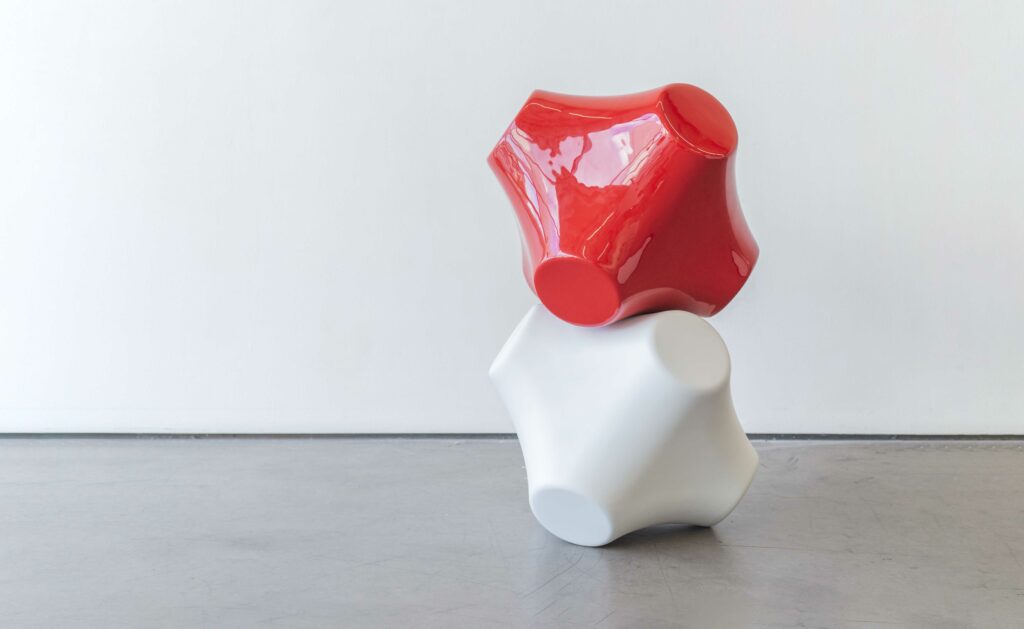
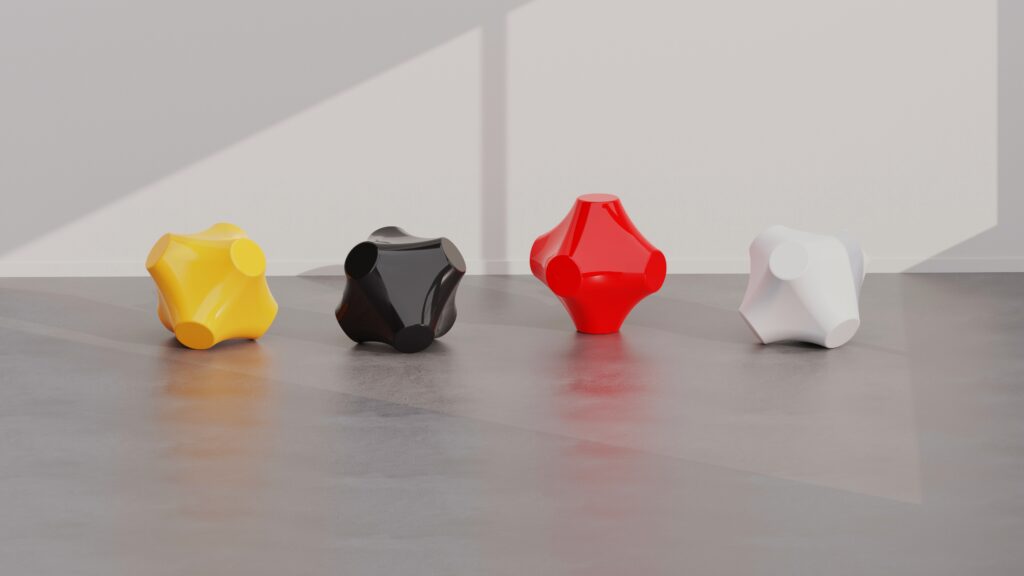
Your creation, the DOLO Sculptural Furniture Piece, is described as “furniture not defined as furniture.” How does the creative process for such a piece differ from your other works, and could you share some insights?
DOLO was my first project after entering the furniture design major. At that time, I thought, “I’ve seen too many chairs, stools, and tables. How can I create something different?” Is it possible to design something that is not immediately recognized as furniture, and people may not even be sure how to use it? The inspiration for DOLO came from the commonly seen wave-dissipating blocks by the seaside. These uniquely shaped cement blocks captivated me with their geometric symmetry and functionality, leading to the birth of DOLO.
In your past works, do you have a favorite or one that you are most satisfied with? If so, why?
I think it would be the Boring Stool and Piclo. Both of these works hide clever elements in places not immediately noticeable. When people use them, there’s a sense of “Oh, so that’s how it works! Oh, it can also be used this way!” which brings a delightful surprise.
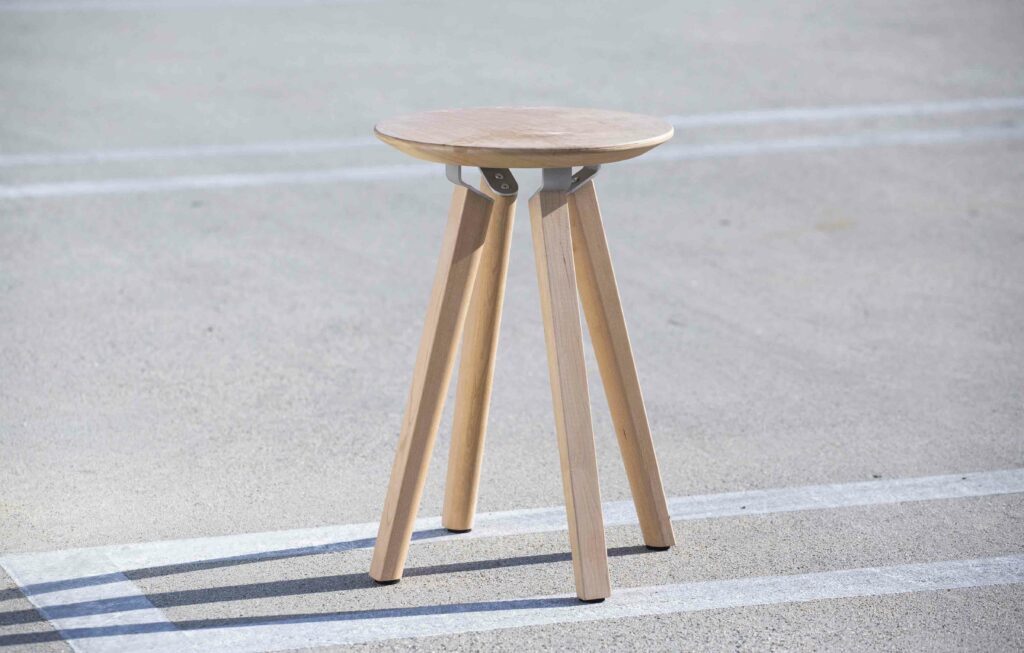
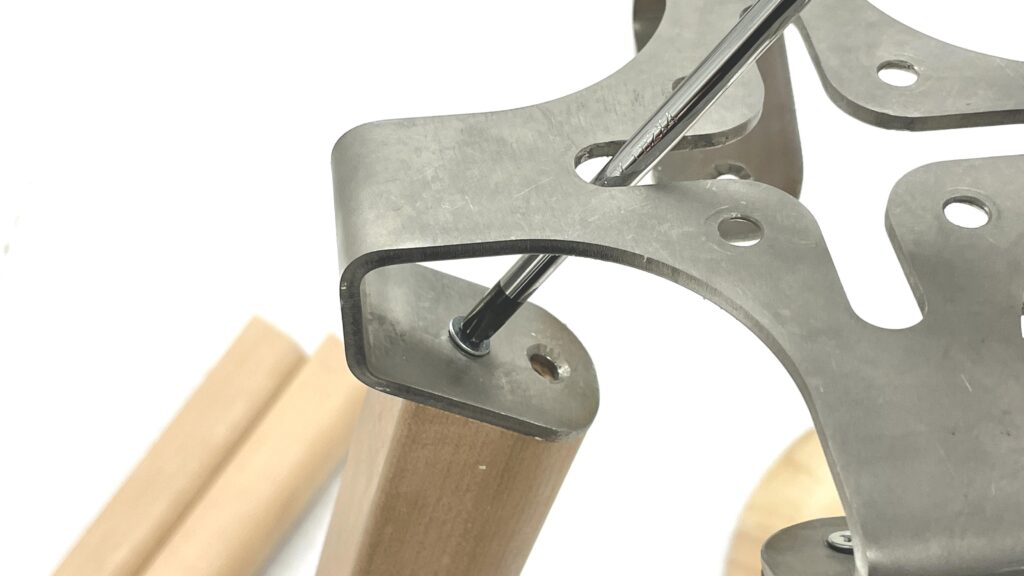
What kind of person are you in your daily life, and do you have any hobbies? Have you incorporated your passion and interests from life into your creative works?
Many people initially find me a bit serious and intimidating, but those who get to know me realize that I’m very warm-hearted. I always try to help my classmates to the best of my ability when they need assistance. As for hobbies, besides running, I also enjoy archery, hiking, and lately, I’ve been immersed in playing Zelda. I’m someone who knows how to have fun; I particularly like the concept of post-credit scenes in Marvel movies. I think my works also contain quite a few “Easter eggs.”
Are there any designers or artists that you like or admire?
Yes, designers like Charles & Ray Eames (although they might be talked about a lot) and Alvar Aalto. Alvar Aalto is truly a designer who pays meticulous attention to details. You can search for his Paimio Chair; at first glance, it might not seem like much, but understanding the story behind the design will leave a profound impact. Also, Nicholas Baker—I’ve been following him since his early sketching days, and I even had the chance to meet him and take a photo in New York. His Pixel Light design is something I appreciate; you can look it up. I also had the privilege of meeting Erika Cross in New York, and she’s a designer with great ideas. Her Bolt Table series is stunning.
Do you have any plans to try something new in your future creative endeavors?
Currently, my design language is not entirely unified, and that’s because I believe there should be a trial-and-error process during the student period. I think in the future I’ll find my unique style and design language, although this process might take a while.






